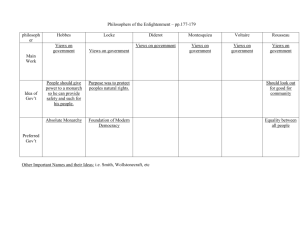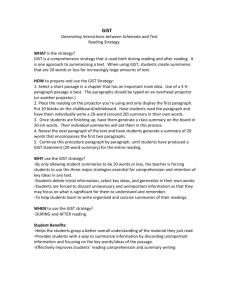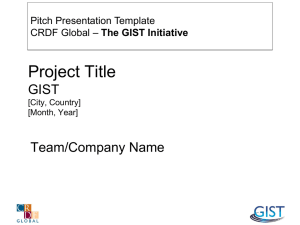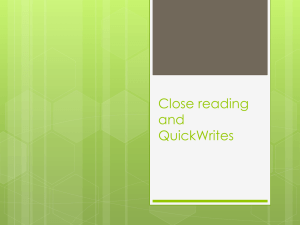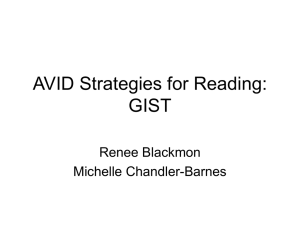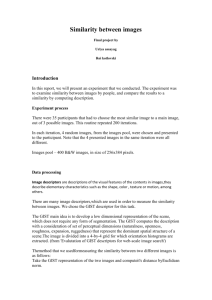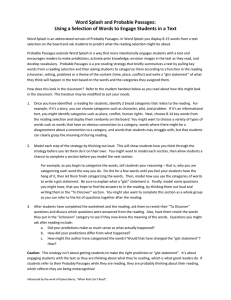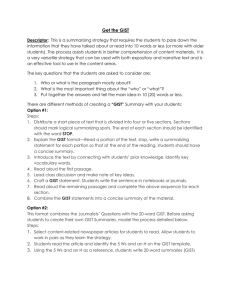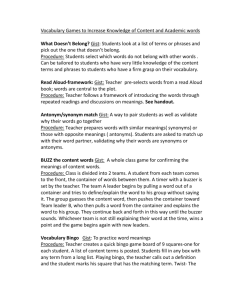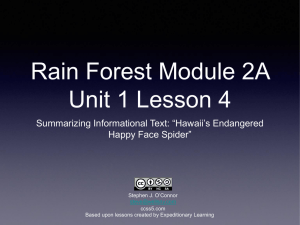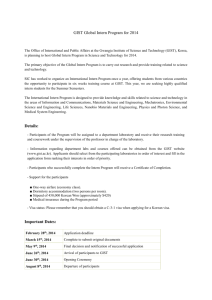GIST_Presentation
advertisement
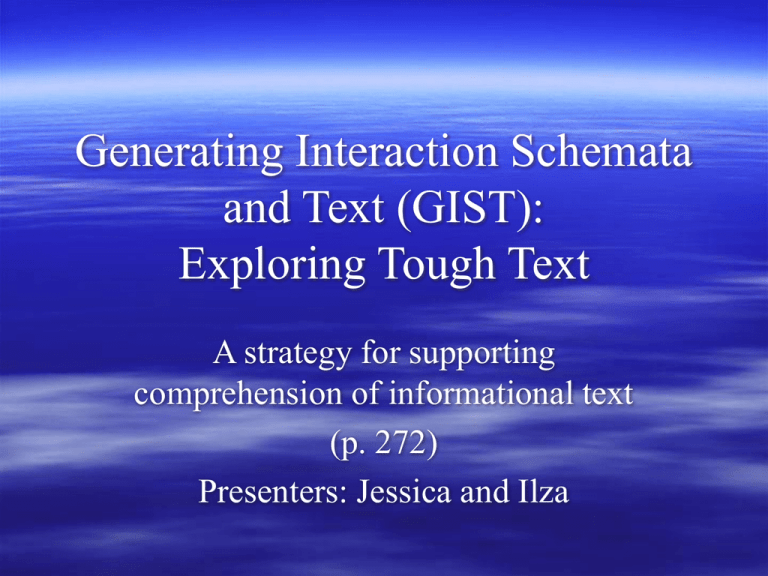
Generating Interaction Schemata and Text (GIST): Exploring Tough Text A strategy for supporting comprehension of informational text (p. 272) Presenters: Jessica and Ilza Why is GIST useful? Helpful when students are required to read long texts containing a significant amount of new information Helps students break down difficult text that may be at or above their instructional level. Group members have a chance to discuss and clarify meaning as they decide on the best summary sentence for the sections or paragraphs (scaffolding). Teacher can emphasize comprehension of text (academic English/ CALP), or communication in English (BICS) Addresses the following TESOL Standards: Goal 2: To use English to achieve academically in all content areas • Standard 1: Students will use English to interact in the classroom • Standard 2: Students will use English to obtain, process, construct and provide subject-matter information in spoken and written form. • Standard 3: Students will use appropriate learning strategies to construct and apply academic knowledge. Goal 3: To use English in socially and culturally appropriate ways • Standard 1: Students will use the appropriate language variety, register, and genre according to audience, purpose, and setting • Standard 3: Students will use appropriate learning strategies to extend their sociolinguistic and cultural competence GIST Steps: 1.) Identify appropriate text for GIST. Decide how students should summarize the text (paragraph by paragraph, section by section), and determine logical stopping points. 2.) Group the students. Each group should have a leader and at least one strong English speaker and reader. – a. If the purpose is understanding text, discussion and negotiation of summary sentence can be done in Spanish and later translated to English. – b. If the purpose is communication in English, discussion should take place in English with first language translations made only for clarification. 3.) Demonstrate the strategy- discuss background knowledge relating to the text and explain the activity. Post summary points, then allow students to discuss and summarize in their groups. GIST Steps, continued 4.) Discuss summary sentences- share whole group, add details that the class thinks will enhance the sentence. Instruct students to write summary sentence on their papers. Teacher serves as facilitator and quality controller. 5.) Read and Discuss Paragraph by paragraph- students perform activity 6.) Read and compare summary sentences- provides an effective review of the passage, gives opportunity to correct any misconceptions. 7.) Assess student progress and understanding- anecdotal records, document student interactions with specific behaviors This strategy can be adjusted for emphasis of… Social use of English (BICS) - collaborative group work - scaffolding Academic use of English (CALPS) – Emphasize vocabulary development Time for Kids- Global Warming T.E.K.S. 3.7 Force, motion and energy. The student knows that the Earth materials have properties that are constantly changing. A) Investigate how glacial movement affect the surface of the earth. B: Introduce activity and model. D: Summarize using GIST with a partner. A: Share as a class, calling randomly on partners. Time for Kids Article: Extend the Learning Students can demonstrate their knowledge of global warming after reading the article by: – Creating a diagram or a model of global warming and teaching the class – Putting together a Glogster, informative poster, or video about the ways that people can avoid contributing to global warming What are some ways we can extend the learning? Have students create a product about their learning: – Poster, video, Glogster, skit, commercial, news article, letter, etc. How do you envision– Using GIST during reading instruction? – Extending student thinking after reading text?
